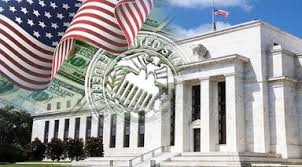Crypto Fund Flows Hit by Macro Pressure After Post-Election Boost
The world of crypto funds is never short of drama, and last week was no exception. After a strong start with nearly $1 billion in inflows, the tide quickly turned as macroeconomic data and a hawkish Federal Reserve weighed on investor sentiment. With net inflows shrinking to a modest $48 million, the post-U.S. election optimism seems to have faded, making way for a more cautious market outlook. In this article, we’ll explore how different crypto assets, from Bitcoin to Ethereum and beyond, performed under these shifting conditions and what it means for the road ahead.
How Did Crypto Funds Perform Last Week?
 Weekly crypto asset flows. Images: CoinShares
.
Weekly crypto asset flows. Images: CoinShares
.
According to reports , Global crypto funds saw modest net inflows of $48 million last week, signaling cautious optimism among investors. However, the week was marked by contrasting trends. Early inflows of nearly $1 billion were overshadowed by outflows of $940 million later in the week, driven by the release of hawkish Federal Open Market Committee (FOMC) minutes and robust U.S. macroeconomic data.
Is Bitcoin Still the Strongest Performer?
Yes, according to Coinshares , Bitcoin-based investment products led global inflows, attracting $214 million last week, despite significant outflows toward the end of the week. This resilience underscores Bitcoin's status as a preferred asset during uncertain times. Notably, U.S. spot Bitcoin ETFs accounted for $312.8 million of the inflows, buoyed by growing institutional interest. Despite this, Bitcoin's price declined 7.8% over the week, reflecting broader market turbulence.
Why Did Ethereum Funds Face Outflows?
Ethereum-based funds recorded substantial outflows of $256 million, the highest among major crypto assets. Analysts attribute this to the broader tech sell-off, with the Nasdaq 100 dropping 3.5% during the same period. U.S. spot Ethereum ETFs alone saw outflows of $186 million, suggesting that macroeconomic conditions and investor risk aversion outweighed the asset's long-term potential. Ether's price fell 14.8%, amplifying bearish sentiment.
Which Altcoins Gained Traction?
XRP-based funds bucked the trend, registering $41 million in inflows amid optimism surrounding Ripple's ongoing legal battle with the SEC, with a critical Jan. 15 deadline approaching. Solana-based products also garnered $15 million in inflows, reflecting renewed investor confidence.
Other altcoins, including Aave , Stellar , and Polkadot , experienced net inflows despite unfavorable price movements. This indicates a degree of speculative interest or long-term positioning by investors in these assets.
What Does This Mean for the Broader Crypto Market?
The crypto market remains highly sensitive to macroeconomic shifts. Last week’s mixed performance highlights the ongoing tug-of-war between investor optimism and macro-driven caution. While Bitcoin continues to demonstrate relative strength, Ethereum’s vulnerability to broader tech sell-offs reveals the interconnectedness of crypto assets with traditional financial markets.
The GMCI 30 index, which tracks the top 30 cryptocurrencies, dropped 12.5% last week, reflecting widespread price declines across the market. As macroeconomic uncertainties persist, the interplay between institutional inflows and asset prices will likely shape the trajectory of the crypto sector in the coming weeks.
Key Takeaways:
- Bitcoin remains a stronghold for investors, with sustained inflows despite volatility.
- Ethereum struggles amid broader tech market declines, pointing to sensitivity to macro trends.
- Altcoins like XRP and Solana show resilience, suggesting selective optimism among investors.
- The crypto market remains tethered to macroeconomic and policy developments, with volatility expected in the short term.
This week's performance underscores the importance of monitoring macro trends and their impact on investor behavior, as they continue to dictate the direction of crypto markets.
Disclaimer: The content of this article solely reflects the author's opinion and does not represent the platform in any capacity. This article is not intended to serve as a reference for making investment decisions.
You may also like
The Fed’s hawkish rate cuts unveil the illusion of liquidity: the real risks for global assets in 2025–2026
The article analyzes the current uncertainty in global economic policies, the Federal Reserve's interest rate cut decisions and market reactions, as well as the structural risks in the financial system driven by liquidity. It also explores key issues such as the AI investment boom, changes in capital expenditures, and the loss of institutional trust. Summary generated by Mars AI This summary was generated by the Mars AI model, and the accuracy and completeness of its content is still undergoing iterative updates.

Cobo Stablecoin Weekly Report NO.30: Ripple's Comeback with a $40 Billion Valuation and the Stablecoin Transformation of a Cross-Border Remittance Giant
Transformation under the wave of stablecoins.

Bitrace's Perspectives and Outlook at Hong Kong FinTech Week
During the 9th Hong Kong FinTech Week, Bitrace CEO Isabel Shi participated in the Blockchain and Digital Assets Forum...

20x in 3 months: Does ZEC’s “Bitcoin Silver” narrative hold up?
You bought ZEC, I bought ETH, we both have a bright future.

